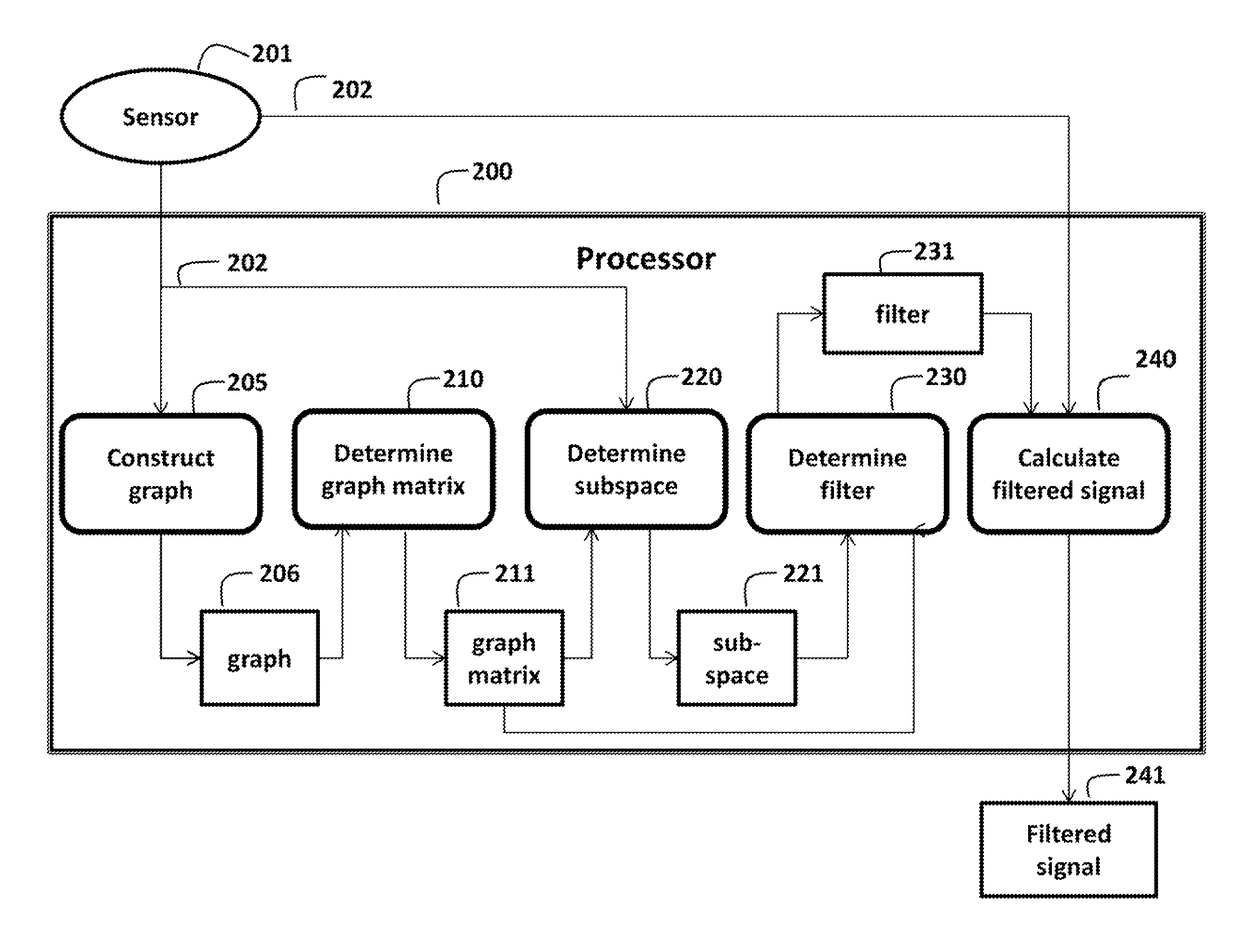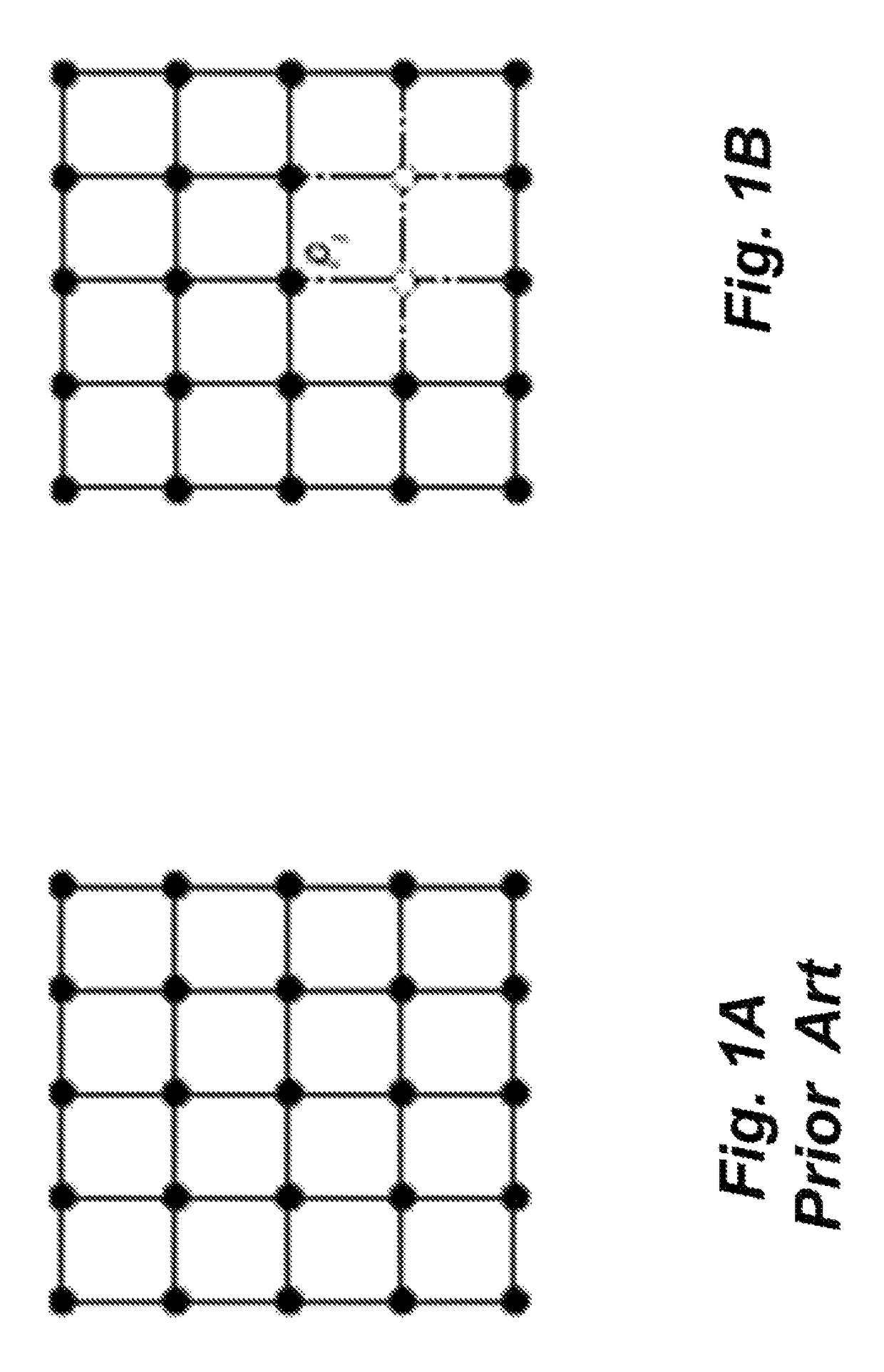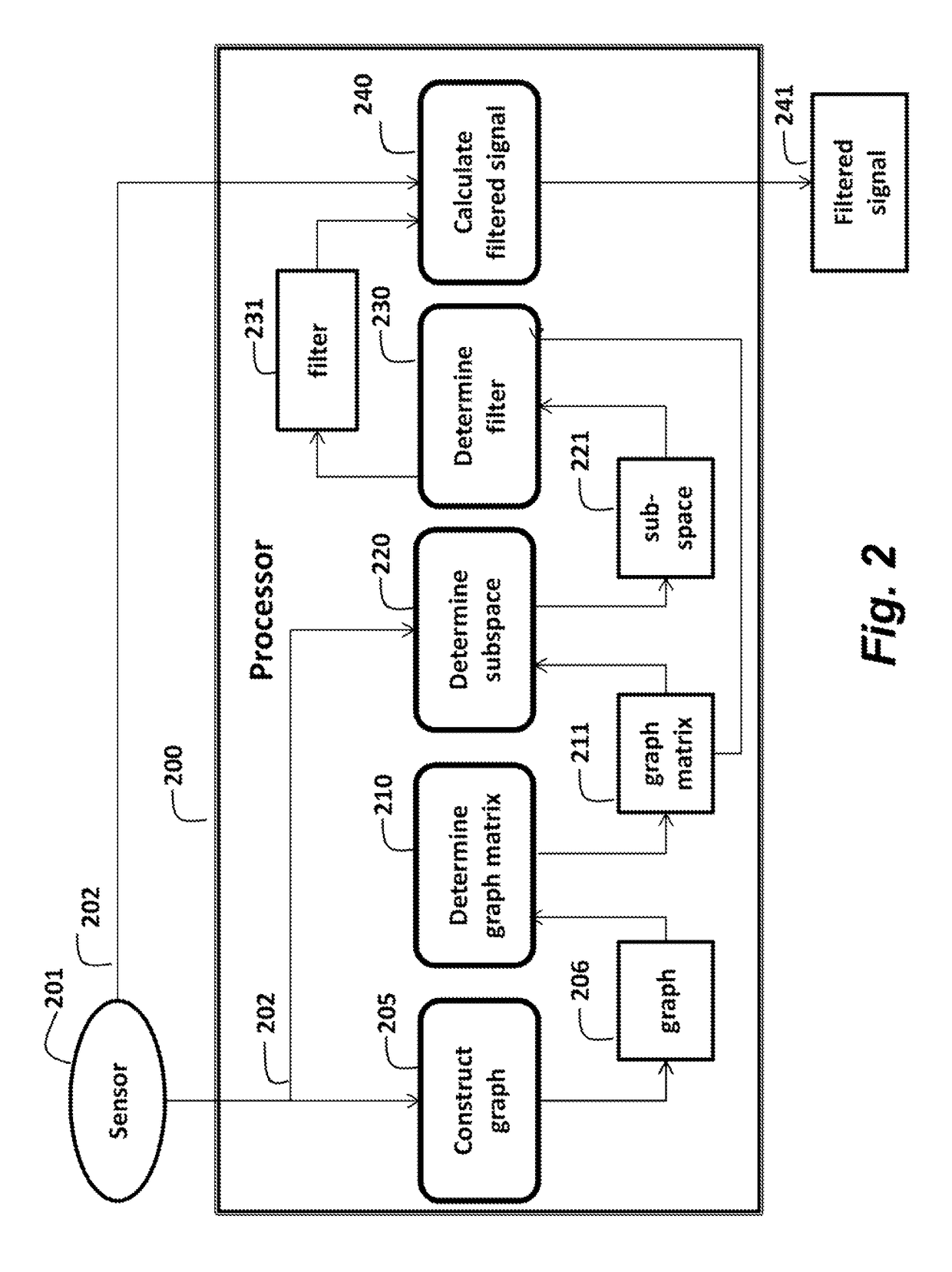Method for graph based processing of signals
a signal and graph processing technology, applied in the field of signal processing, can solve the problems of high complexity of methods, unsuitable for a variety of given signals, and high degree of sensitiveness of filtering results, and achieve the effect of improving the peak signal-to-noise ratio
- Summary
- Abstract
- Description
- Claims
- Application Information
AI Technical Summary
Benefits of technology
Problems solved by technology
Method used
Image
Examples
Embodiment Construction
[0043]FIG. 2 shows a flow chart of a method for processing a signal 202. The signal 202 can be acquired by a sensor 201. For example, the sensor is a camera or a 3D video camera. Alternatively, the signal is stored in a memory. Typically, the signal is in the form of digital (binary) data. A graph 206 is constructed 205 from the signal. A graph matrix 211 is determined 210 from the graph. A subspace 221 is determined 220 based on the graph matrix and the signal. A filter 231 to the subspace is determined 230. The filter 213 is a map that maps 240 the signal 202 to the subspace 221 producing the filtered out signal 241.
[0044]FIG. 3 shows a flow chart for determining 220 the subspace from a group consisting of a Krylov subspace 305, an approximate Krylov subspace 310, a rational Krylov subspace 320, an approximate rational Krylov subspace 330, and combinations 340 thereof.
[0045]FIG. 4 shows a flow chart for determining 230 the filter 231 from a group consisting of a function 405 of th...
PUM
 Login to View More
Login to View More Abstract
Description
Claims
Application Information
 Login to View More
Login to View More - R&D
- Intellectual Property
- Life Sciences
- Materials
- Tech Scout
- Unparalleled Data Quality
- Higher Quality Content
- 60% Fewer Hallucinations
Browse by: Latest US Patents, China's latest patents, Technical Efficacy Thesaurus, Application Domain, Technology Topic, Popular Technical Reports.
© 2025 PatSnap. All rights reserved.Legal|Privacy policy|Modern Slavery Act Transparency Statement|Sitemap|About US| Contact US: help@patsnap.com



